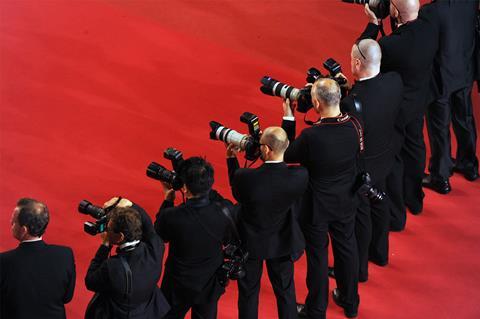
According to the Accessibility Report, the majority of U.S. and international film festivals remain inaccessible to attendees with disabilities.
The initial findings of the Accessibility Scorecard Impact Report detailed that 73% of people with disabilities who responded to an extensive survey experienced a lack of accessibility during film festivals.
Organizers of the Scorecard include FWD-Doc (Filmmakers with Disabilities), the Film Events Accessibility Working Group (FEAW) and the Film Festival Alliance (FFA).
The report was compiled between July 2022 and November 2023 and features 353 responses from attendees of 75 film festivals around the world, including the Berlinale, Sundance, SXSW and TriBeCa. Overall, 93% of festivals scored below the median on the Accessibility Scorecard, and only 7% scored above the median.
Other survey results revealed that 77% of respondents said live captions were not available during in-person panels or Q&As, and 61% said closed captions for films, panels and Q&As were not working or were of poor quality.
“Captiview [personal closed captioning devices used in cinemas] “This in-person version is not the answer,” said one anonymous respondent. [closed captioning] It’s inadequate and inhumane. Open captioning is the only way to truly experience the festival.”
Of the remaining respondents, 51% said that in-person festivals and film events do not offer American Sign Language (ASL) or adequate sign language interpretation.
As one respondent explained, “It was unfortunate that we had to tell performers that they could not attend festival events or accept invitations to dinners and parties because we could not provide an interpreter.”
According to the scorecard organizers, moviegoers, filmmakers, press and other representatives with disabilities have experienced a lack of accessibility at events and festivals, but until now the industry has lacked a standardized feedback mechanism to quantify and qualify accessibility.
The Scorecard was created to answer that need for data. It’s essentially a survey, with 70 questions posed on a 5-point scale, ranging from demographics to experiences attending specific film festivals, with space to add comments. The Scorecard was sent to FFA and FWD-Doc members and festival partners, but festivals outside of either organization can also request feedback from the Scorecard. Meanwhile, respondents can submit feedback about events and festivals they’ve attended, regardless of whether the organizers have opted in to receive feedback.
Issues that disabled attendees face at the festival include standing-room-only registration desks, authentication desks and computer kiosks that are too expensive for wheelchair users, screening booking systems that do not detail the availability of subtitles and other accessibility options, and a lack of transportation assistance between festival sites.
The Cannes Film Festival, which just wrapped up its 77th edition last month, did not participate in the scorecard, as did the Venice and Toronto Film Festivals. But organizers told Screen that the Berlinale and European Film Festival (EFM) had made significant efforts to solicit feedback on accessibility and had worked with FWD-Doc for a year. EFM hosted a large coalition of filmmakers with disabilities in February.
Still, the Berlinale was not among the highest scoring festivals. The five festivals that scored above average were Superfest Disability Film Festival, Black Star Film Festival, International Queer Women of Color Film Festival, Access Horror Film Festival, and the New Orleans Film Festival. Notably, all five of these festivals cater to underrepresented groups in the film industry and have annual operating budgets of less than $3 million.
Accessibility Solutions
Organizers believe that by prioritizing and investing in five specific areas, they will improve the festival’s accessibility.
These include live captioning of panels and Q&As, low sensory spaces (calming environments specifically designed to be accessible to people with neurodevelopmental disabilities), closed captioning of films, panels, and Q&As, American Sign Language (ASL) or appropriate sign language interpretation, accessibility information easily found on the website and/or event staff who are knowledgeable about the access available at the Festival.
The full recommendations and detailed advice from the Scorecard organisers can be found in the Impact Report. Film festivals and events looking to improve their accessibility are also encouraged to register to receive feedback from the Scorecard.
“We’ve heard many stories over the years about inaccessibility at film events,” said Cassidy Dimon, founder of the Film Event Accessibility Working Group, which developed the Scorecard survey. “Through the Scorecard Impact Report, we now have concrete data that validates individual experiences and provides clear guidance to the industry and funders on how to advance equity through accessibility in film exhibition spaces.”
Amanda Upson, Interim Director of FWD-Doc, said: “Inaccessible film festivals and film events prohibit disabled filmmakers from advancing their careers and projects, and ultimately negatively impact the entertainment industry’s overall revenues by preventing disabled filmmakers from entering the entertainment industry. This again and again demonstrates that without the expertise of disabled filmmakers, we cannot unlock the $13 trillion in disposable income held by the global disability community.”
Barbara Twist, executive director of the Film Festival Alliance, added: “Film festivals are wonderful spaces for building community, and organizers have a roadmap to expand access, helping to grow audiences, increase career opportunities for filmmakers with disabilities, and extend the vibrant festival experience to everyone.”
Added Jim LeBrecht, Oscar-nominated director and co-founder of FWD-Doc: “We all want to feel welcomed and accepted, and we all want to have the opportunity to fully participate in events and activities. Accessibility benefits everyone, not just people with disabilities. Non-disabled attendees also benefit from having disabled filmmakers in the room; we bring experience and valuable perspectives to the table.”

